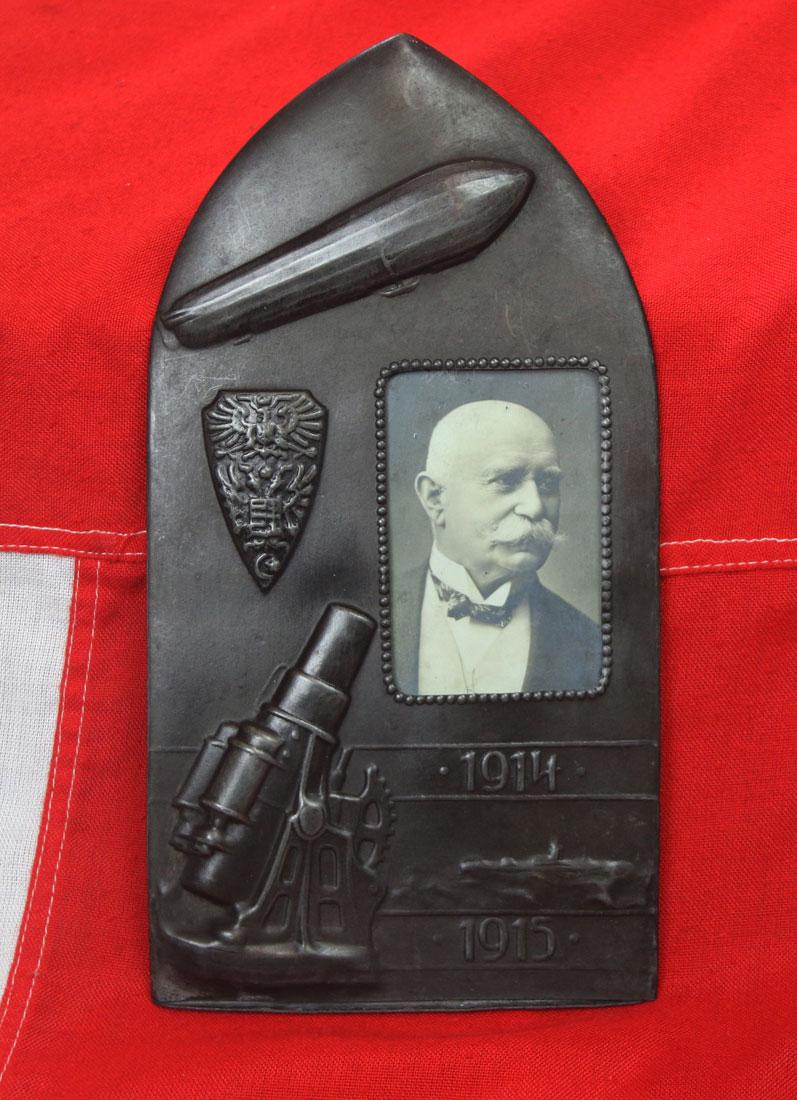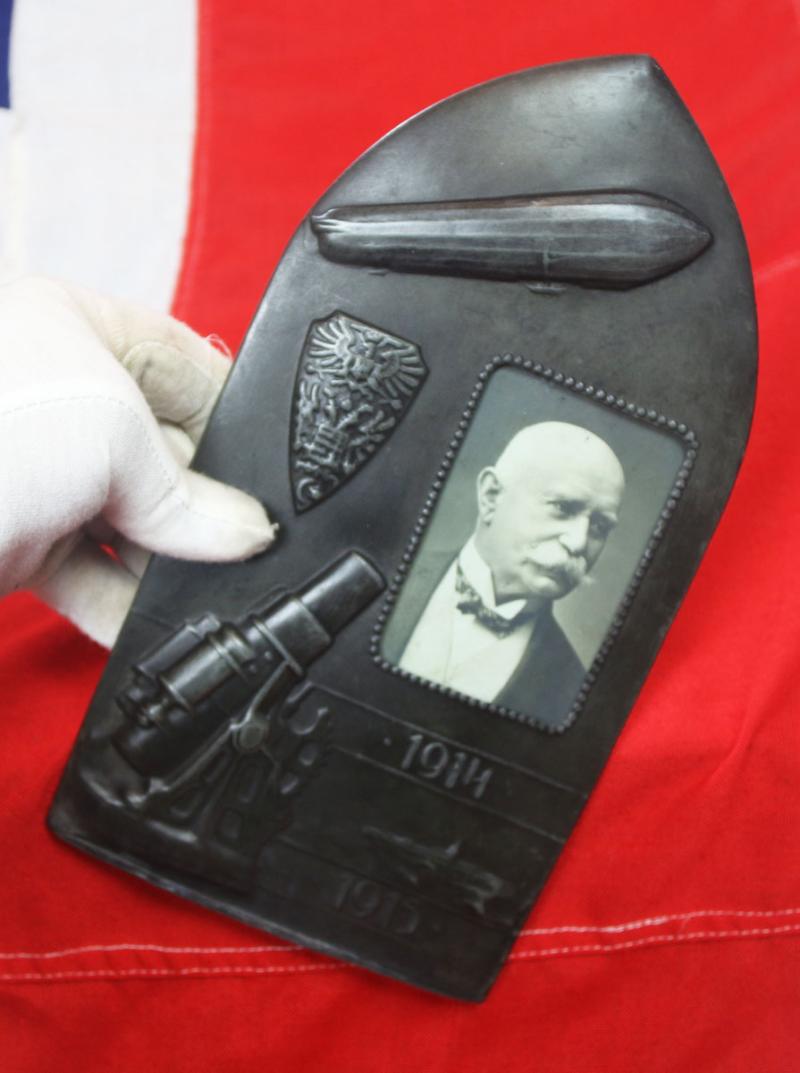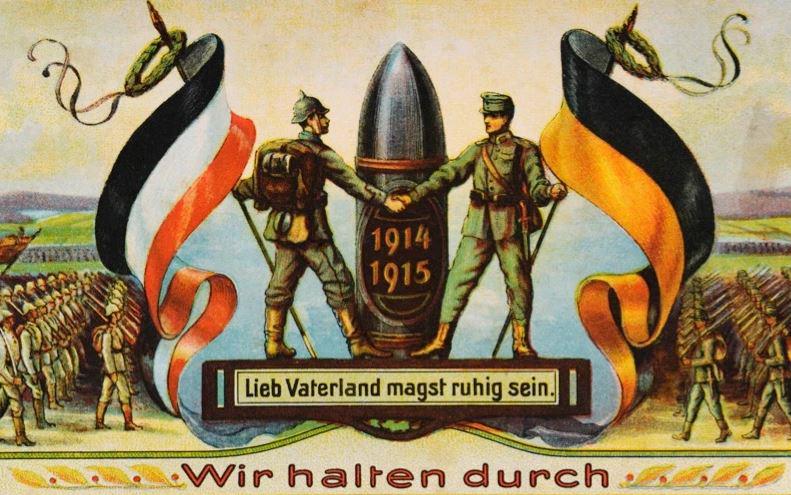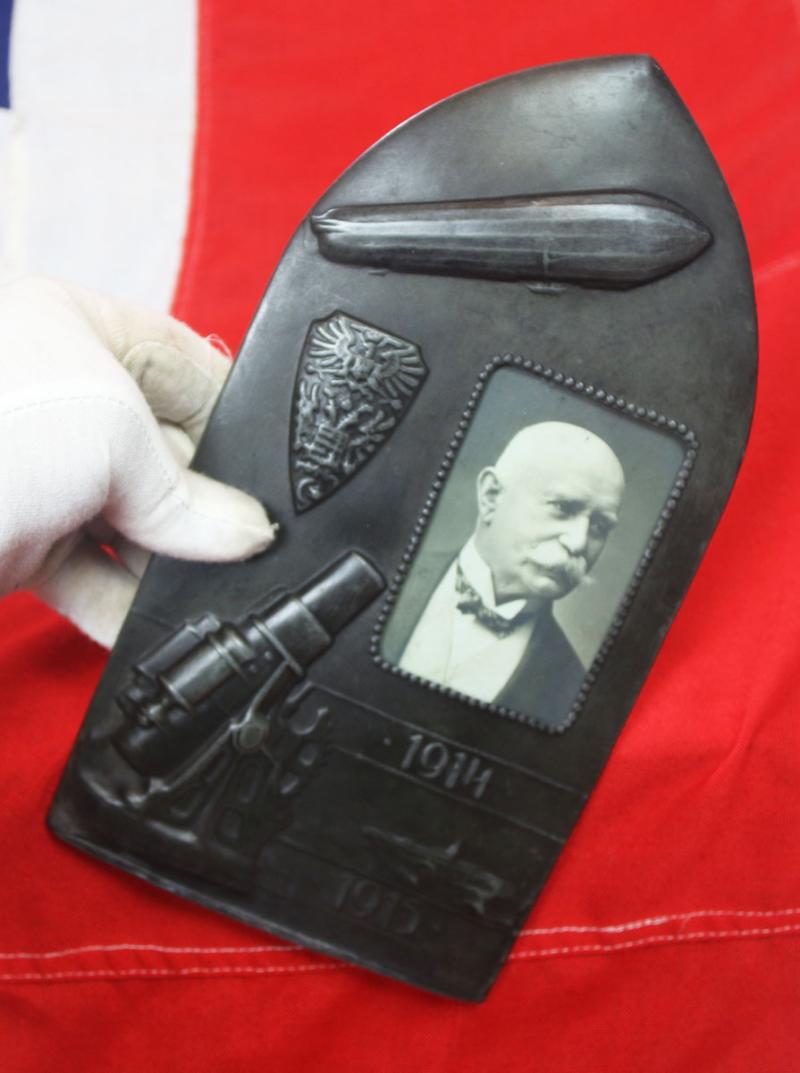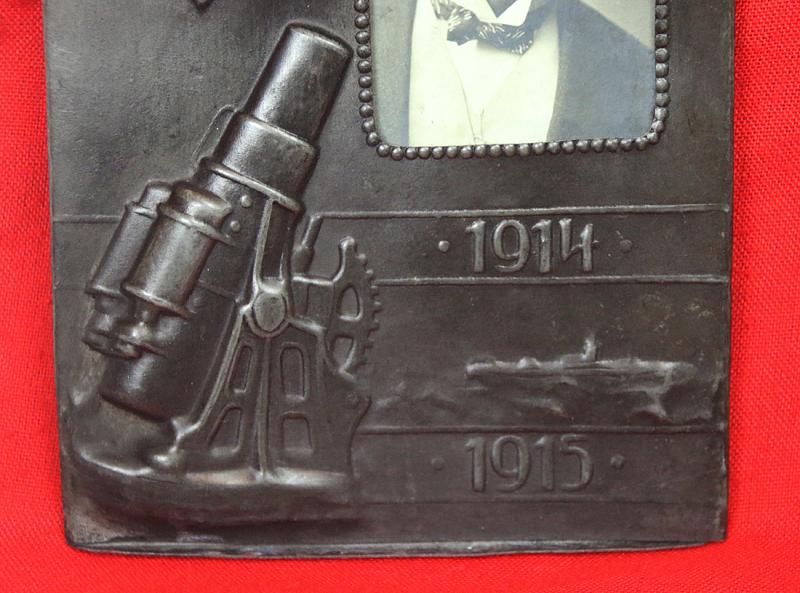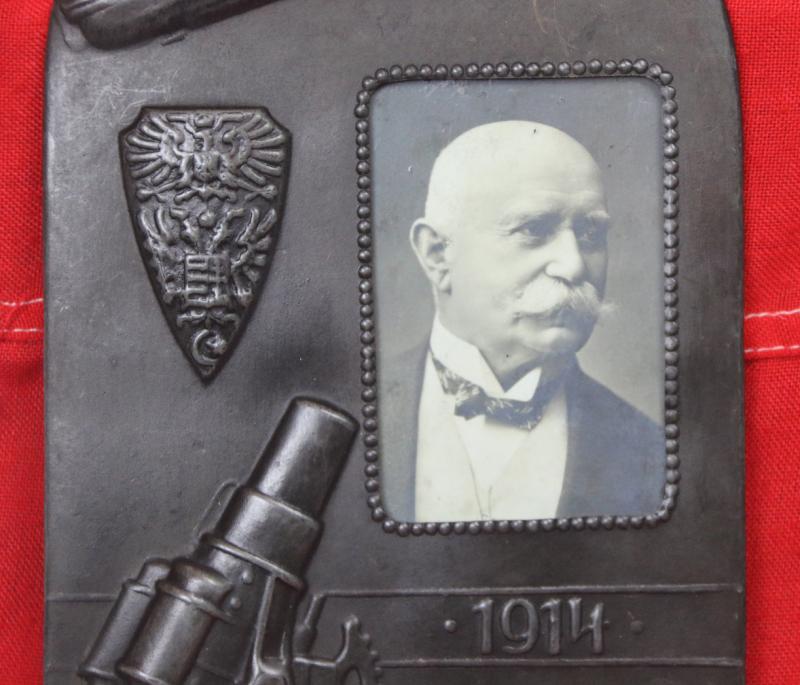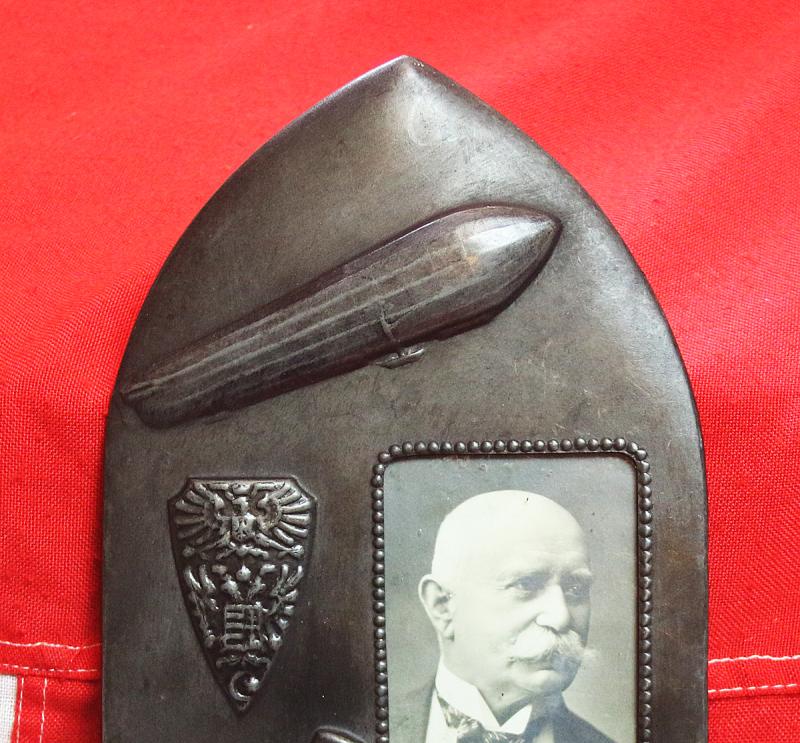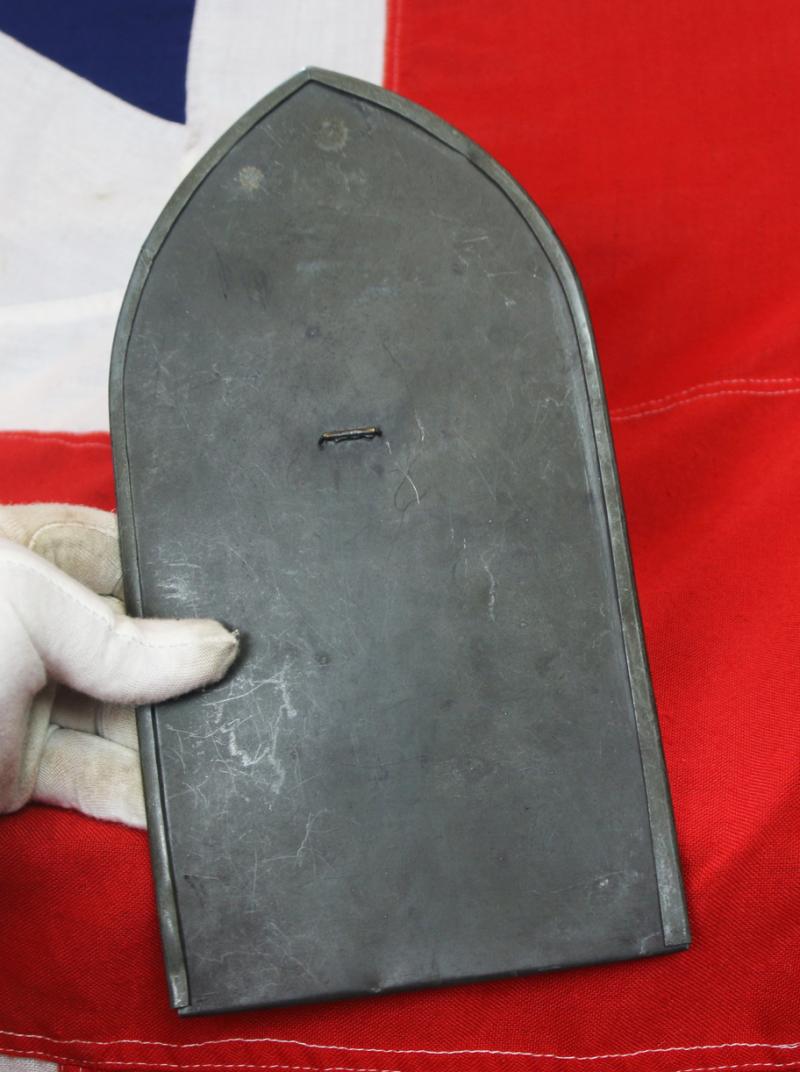A 1914, 1915, Superb WW1 Central Powers Alliance Piece. A Howitzer Shell Shaped Alloy Photo Frame With Repousse Impressions of a Howitzer Cannon, A Zeppelin, and A Battleship With Crest of Prussia, Austro Hungary and Turkey
With a picture of Graf von Zeppelin. The back panel slides down to removed the picture, and this could picture could be be replaced at the time with a photograph of a family combatant serving in the war. it is designed for wall mounting, with an inbuilt rectangular hook mount. Interestingly, at the time, the symbol of the Central Powers Alliance was the Howitzer shell, see photo 3 in the gallery.
This is a beautiful quality rare piece, which we have only once ever seen before, and that was in an old history book of the Central powers early war alliance, before Bulgaria joined the alliance. In simply superb condition, an absolute beauty of a Central Powers item of original militaria.
At the start of the war, the Central Powers consisted of the German Empire and the Austro-Hungarian Empire. The Ottoman Empire joined later in 1914, followed by the Kingdom of Bulgaria in 1915. The name "Central Powers" is derived from the location of these countries; all four were located between the Russian Empire in the east and France and the United Kingdom in the west.
.The Allies described the wartime military alliance of Germany, Austria-Hungary, Bulgaria and the Ottoman Empire as the 'Central Powers'. The name referred to the geographical location of the two original members of the alliance, Germany and Austria-Hungary, in central Europe. The Ottoman Empire joined the alliance in November 1914 and the last member of the quartet, the Kingdom of Bulgaria, entered the war on the side of the Central Powers in October 1915.
As well as providing the alliance with its name, the geographical position of the German and Austro-Hungarian empires also gave the Central Powers at least one very important strategic advantage over the Allies they were fighting. It was much easier for the Germans and Austro-Hungarians to move troops, equipment and supplies from one battle front to another because they could do much of this on their domestic railway networks.
For example, the Germans could move 10 infantry divisions from the Eastern Front to the Western Front via a relatively straightforward journey across Germany. It was no more difficult for the Austro-Hungarians to move five infantry divisions from the Eastern Front to the Italian Front, or to the Salonika Front in the Balkans.
Compare this situation with the difficulties faced by the Allies in moving men, equipment and supplies from one battle front to another. This usually involved long circuitous routes across or around multiple countries, each with different rail networks and logistical procedures. It was also likely to require transport by sea, which posed its own set of risks, notably from German and Austrian submarines. So while it could take two or three weeks to transport a British Army unit and its equipment from the United Kingdom to the Salonika Front, the Austro-Hungarians, and the Germans if need be, could move reinforcements there in less than a week.
The military term for this strategic advantage of the Central Powers is 'operating on interior lines'. It was used to most dramatic effect in early 1918, when the rapid transfer of large numbers of German divisions from the Eastern Front to the Western Front enabled the great German spring offensive in the west.
Code: 24899
240.00 GBP

